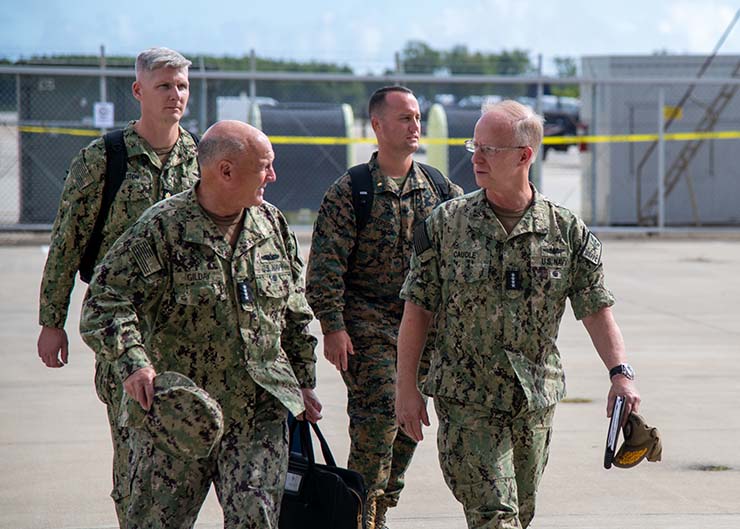
Norfolk: US Fleet Forces Command, facing major infrastructure spending shortfalls, is weighing alternative funding sources to fix them.
Admiral Daryl Caudle said the military construction budget isn’t sufficient to address some issues at the bases and shipyards under his command. “Some of the problems, quite frankly, are just too large: If I went and solved one problem, it could take the majority of the MILCON budget” for that year, he said.
Caudle said he’s in talks with Navy civilian leadership and outside groups, including Business Executives for National Security, a non-profit led by retired Army General Joseph Votel, about pursuing public-private ventures to make near-term facilities improvements. Under this type of arrangement, he said, the work could be completed quickly but the Navy could pay for it over a longer and more manageable timeline, or in some cases pay less for the work.
These ventures are varied arrangements. Under one type of deal, a private company pays upfront for a project, and the government pays it back through usage fees. In another, the government finances a project using grant money aimed at achieving a certain outcome, such as reducing carbon emissions or making an area safer for pedestrians.
Caudle said the Navy is five years into a 20-year, $20-plus billion Shipyard Infrastructure Optimization Program to modernize the four public ship repair yards.
“A lot of the infrastructure that’s currently under the SIOP plan could take all of the air out of the room from the MILCON budget,” he said, noting private investors could instead fund the yard overhauls and the Navy could “pay them back over, again, a longer [10- or 15-year] approach.”
Though the Navy on its own cannot solve this — and Newport News Shipbuilding has tried in the past to create additional parking but has not been able to keep up with demand — Caudle said he thought the Navy’s civilian leaders were well positioned to bring together federal, state and local lawmakers and area businesses to develop a solution under this public-private venture model.
Caudle said he has been working with Meredith Berger, the assistant secretary of the Navy for energy, installations and environment, on the matter, while Navy spokesman Lt. Cmdr. James Adams said the two are seeking “to explore a variety of creative alternative financial opportunities.”
“Congress has provided a variety of authorities that allows us to leverage and blend external capital to construct and/or renovate critical infrastructure,” Adams said, noting Naval Station Mayport in Florida recently completed a utility privatization contract to recapitalize its entire waste water treatment infrastructure.
Caudle said he’s eying some public-private ventures that would improve quality of life. The Navy wants to use land at Naval Air Station Oceana in Virginia to bring in more restaurants and shopping, which could be accomplished under this model.
Caudle said the Navy has a big vulnerability in its aging electrical distribution systems in some Norfolk-area facilities. The power company is working with the Navy to map out the electrical distribution grid right now. If the Navy got authorization to enter a public-private venture, the power company could come in and upgrade that grid itself, and the Navy would pay the company back over time.
“Think of running our electrical distribution system as a service, [instead of] me actually having to own and operate it,” Caudle said.
Adams said this could be accomplished under a model similar to that used for the Mayport waste water system.
Though this isn’t an approach the Navy or Pentagon has traditionally used, James Geurts, the former assistant secretary of the Navy for research, development and acquisition, said he highly recommends the services consider it.








